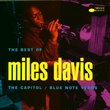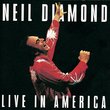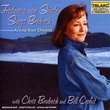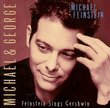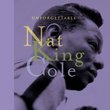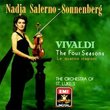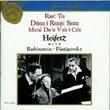| All Artists: Gaetano Donizetti, Charles Mackerras, Julius Rudel, Aldo Ceccato, London Philharmonic Orchestra, Beverly Sills, Sherley Verrett, Robert Lloyd, Richard van Allan, Gwynne Howell Title: Donizetti - The Three Queens (Anna Bolena / Maria Stuarda / Roberto Devereux) Members Wishing: 0 Total Copies: 0 Label: Deutsche Grammophon Original Release Date: 1/1/2000 Re-Release Date: 11/7/2000 Album Type: Box set, Original recording reissued Genre: Classical Style: Opera & Classical Vocal Number of Discs: 7 SwapaCD Credits: 7 UPC: 028946596722 |
Search - Gaetano Donizetti, Charles Mackerras, Julius Rudel :: Donizetti - The Three Queens (Anna Bolena / Maria Stuarda / Roberto Devereux)
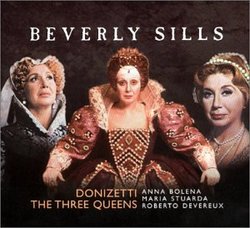 | Gaetano Donizetti, Charles Mackerras, Julius Rudel Donizetti - The Three Queens (Anna Bolena / Maria Stuarda / Roberto Devereux) Genre: Classical
Gaetano Donizetti didn't actually set out to compose a cycle based on the tragic histories of the Tudor Queens. The three works gathered here--including his breakthrough opera, Anna Bolena, Roberto Devereux, and the long-n... more » |
Larger Image |
CD DetailsSynopsis
Amazon.com Gaetano Donizetti didn't actually set out to compose a cycle based on the tragic histories of the Tudor Queens. The three works gathered here--including his breakthrough opera, Anna Bolena, Roberto Devereux, and the long-neglected Maria Stuarda--were created at various points in his maniacally prolific career, and each has its own rather complicated, haphazard genesis. But the belated reappreciation given to these works at New York City Opera during the heyday of the bel canto revival--a crucial step in the overall revival of Donizetti as well--conferred a sort of post facto sense of unity thanks to the signature contributions of Beverly Sills. These roles were, quite unpunningly, her crowning achievement. Yet despite a brief efflorescence of celebrity (even extending to a Time magazine cover) when she was considered perhaps the rival to Joan Sutherland, Sills slipped through the cracks. For all her formidable acting skill--a substantial aspect of her accomplishment in these interpretations--she never quite made it to the era of opera telecasting, and her problematic recorded catalog and relatively early retirement from the stage hindered the Sills legend from extending to a new generation. But now, there's no excuse to overlook the Sills achievement. Coupled with the belated reissue of her early triumph in The Ballad of Baby Doe, this Donizetti box set gives a fuller portrait of the artist Sills. This is quite simply a can't-miss bonanza for Donizetti-heads and, for that matter, fans of beautiful singing. The original project started off with Roberto Devereux--recorded in London in 1969--and continued until the summer 1972 recording of Anna Bolena, but this is the first time the old LPs have been made collectively available on CD in remastered format. The box includes facsimiles of the original lengthy liner notes (with astute background, commentary, and translations--full libretti included--by William Ashbrook) and a bonus booklet of photos from the original NYC Opera productions. Just as the musical content varies in quality from opera to opera, indeed within each opera, the level of performance is by no means seamless or at the same peak pitch throughout. Some listeners will prefer the less liberal but profoundly attentive and intuitively rich conducting of Charles Mackerras in Devereux, while others will overlook the rather surprisingly sloppy string ensemble and figuration committed by the London Symphony in Anna Bolena for the hectic energy and pacing Julius Rudel could conjure. The challenges demanded by Donizetti's heavy writing for Elisabetta in Devereux can manifest as strain, but this part also registers Sills's vocal acting with a powerful punch: just listen to the range of emotional content she sails through in the scene of her conflicted first duet with Roberto, beginning with "un tenero core" (Act I). One of the joys here is zeroing in on your own favorite passage, scena, flicker of insight: perhaps it's Anna in prison, the outburst of two queens meeting in the park outside Fotheringhay (who cares if history has been amended to suit dramatic license?), or Elisabetta's horrifying realization upon the execution of her beloved. And despite some unevenness in the casting, this set offers a number of other vocal treasures to set beside Sills's artistry: the utterly compelling Giovanna (Jane Seymour) of Shirley Verrett in Anna Bolena, Eileen Farrell's return to the studio for Maria Stuarda's imperious Elizabeth (interesting to compare with Sills's earlier slant on the queen from Devereux), Paul Plishka's imposing Henry the 8th, Peter Glossop's scheming Nottingham. If you're not already an addict, this set will bring you back for fix after fix. --Thomas May Similarly Requested CDs
|
CD ReviewsA MONUMENTAL REISSUE lesismore26 | Chicago, Illinois USA | 11/07/2000 (5 out of 5 stars) "Many operaphiles have been awaiting the release of these three Donizetti operas since the advent of CD (many of us despaired that they might never be reissued at all!), and it has been a long time coming. Bravo to Deutsche Gramophone for doing what EMI should have done at least a decade ago. The Donizetti "three queens" operas themselves are among the cornerstones of the Italian bel canto period of opera ------------ "Roberto Devereux", which deals with the love affair and conflict between Queen Elizabeth I and the Earl of Essex, "Maria Stuarda", which gives a fictional account of the conflict and confrontation between Queen Elizabeth I and Mary, Queen of Scots, and finally, "Anna Bolena", which tells of the events leading up to the execution of Anne Boleyn at the hands of husband King Henry VIII. All three operas are loaded with bel canto melody, and they burst with showstopping cadenzas, roulades, as well as rousing finales. All three operas demand a prima donna with sufficient dramatic and vocal virtuosity to command the roles of Queen Elizabeth I (in "Roberto Devereux"), as well as the title roles in "Maria Stuarda" and "Anna Bolena". While all three of these operas were revived from time to time over the last forty years with notable divas such as Leyla Gencer, Maria Callas, Joan Sutherland, Montserrat Caballe, and most recently, Edita Gruberova, none of them made the speciality of these operas that Beverly Sills did in the years between 1970 and 1975. Arguably, it is for her work in these three operas that Beverly Sills will be remembered, and it was in the New York City productions of these three operas that Beverly Sills made her mark in several cities in the United States ----- in performances that are still being talked about. The three Donizetti queens were a vocal stretch for Sills, whose voice was not as large or dramatic as these roles really require, but by virtue of her sheer willpower, dramatic concentration, and keen musicianship, she was able to create three completely believable and compelling characterizations that all but jump out of the speakers and into your listening room. That Sills was forcing her voice far beyond its limits (she herself admitted that her assumption of these roles shortened her career by many years) lends tremendous tension and excitement to her work here (her singing of the three final scenes of all three operas graphically illustrate this point), and the final impression in all three operas is one of a great operatic artist at the virtual peak of her vocal and interpretative powers. All three operas have outstanding supporting casts, and all three are exceptionally well performed. Three standouts: Shirley Verrett's Jane Seymour in "Anna Bolena" (Verrett is in spectacular voice here -- the greatest singing, I belive, that she has ever preserved on any recording), and Eileen Farell's Queen Elizabeth I in "Maria Stuarda" ------ they are not merely supporting Sills, but are meeting her on her own ground --- and each of them alongside of Sills provide duels to the death! Tenor Stuard Burrows appears as both Lord Percy in "Anna Bolena" and as Leicester in "Maria Stuarda", and he sings beautifully in both operas. Conductors Charles Mackerras (in "Roberto Devereux"), Aldo Ceccato (in "Maria Stuarda") and Julius Rudel (in "Anna Bolena" all know what to do with this wonderful music, and they provide a wonderful framework for each of the three operas. All three operas are packaged tastefully (complete with the original artwork that appeared when these operas made their first appearance on LP) in a beautiful box which also contains a book with pictures of Sills preparing for "Roberto Devereux" at the New York City Opera. Bravo again to DGG for making these spectacular operas available on CD ----- and to Beverly Sills for providing us with what I feel to be her greatest work. This fabulous Donizetti triology belongs in every opera library and it has my most enthusiastic recommendation." An old friend comes home m.nell@rf.roccadefinance.nl | Kampen, The Netherlands | 11/27/2000 (5 out of 5 stars) "Tie up the purists and let the party begin - Bubbles is back in town! Many opera lovers have probably had the same experience: I have been waiting for these recordings to be re-released since 1985. When the box arrived, with the original artwork intact, it was like inviting an old friend back into my house. As so often happens with old friends, however, I soon discovered that we have grown slightly apart over the years.Very few people will dispute that these three operas, in these particular recordings, represent milestones in the history of bel canto recording. Sills's assumption of these roles must have caused a sensation at the time. Many people would have been familiar with "Anna Bolena" and some with "Maria Stuarda", but "Roberto Devereaux" was presumably a rare find. The only possible hurdle standing in the way of sensational success still lies in whether or not you like Beverly Sills. I know of no other prima donna who has divided opinion to such an extent, except for Callas. Listening to the recordings again my own adoration is confirmed: although the voice is not to everybody's taste and she sometimes does make some seriously ugly sounds, her commitment to the music and the drama is such that one is almost involuntarily won over by her. Dramatically she is as convincing as Anna and Maria as she is as Elizabeth, although the latter role definitely causes her to pull out all the proverbial stops. Her famous (or infamous) use of coloratura sometimes make the vocal lines unrecognisable from the written page, but oh brother, is it thrilling! What I personally find particularly important about this release, is that a "new" generation of opera lovers will hopefully be able to experience this great artist at her very best. As much artistic merit as her late recordings for EMI might have, the "imperfections" in the voice are mercilessly amplified and, I am sure, have caused many people to lose interest in her. Imagine, for example, what people might think of Callas if only her recordings from 1965 and later were available.It is very tempting to devote an entire review to Sills, but she does receive some great support from her supporting casts. Many people have highlighted Shirley Verrett's arresting Jane Seymour in "Anna Bolena", but throughout there is hardly a flaw to be pointed out. Even more astonishing, perhaps, is the remastered sound. Personally I have to keep reminding myself that I am not sitting in an opera house, listening to these operas in performance. The balance of the orchestra has been brought forward just enough to give that illusion. Although this sometimes results in the singers being drowned out, I do not find this a bad thing at all. The big ensembles have a very realistic feel because of it. Although there are still some editing glitches, the sound overall is really superb.Where, then, do I feel that my old friend and I have parted ways? Fifteen years is a long time in any music lover's life and experience has taught me a thing or two. There are times when I find that the style of singing has dated more than it should have. One example is Verrett's plunges into the growling chest register: these days singers tend not to overuse that technique so much. One inevitably has to compare these recordings to those done by Edita Gruberova, the current great exponent of these roles and, as much of a Sills fan as I am, Gruberova does bring a subtlety to her characterizations not always is evidence with Sills. She can be more regal, sometimes more vulnerable, whereas Sills tends to continually hover on the edge of hysteria.Having said that, I would not live without these recordings for love nor money. No true lover of bel canto should. It is rip-roaring, giddy-making magic from start to finish and one thing is for sure: nobody, before or since, has sung the "Stuarda" final scene as effectively." Rejoice! m.nell@rf.roccadefinance.nl | 11/14/2000 (5 out of 5 stars) "I can add little to what lesismore26 wrote beyond seconding that opinion. All lovers of opera and bel canto should be rejoicing and dancing in the streets that these three recordings have at last been issued in worthy versions on CD. "Anna Bolena" was available as a special import for a while, but it included no libretto and was technically lacking the quality of the new DG release. The DG release includes the excellent, even superb, notes written for the original releases by William Ashbrook (the only thing better is the more detailed discussions found in his book on the Donizetti operas). Ashbrook also did the line-by-line translations that are included. There are minor bumps and burbles in each recording, but the over-all achievement will not likely be bettered in the lifetime of anyone contemporary with this comment. If you don't know bel canto opera as something more than pretty, canary-like pipings, get thee to the order icon and buy this set. Then set aside separate days to listen to each of the operas with care, surrendering yourself to the drama and emotion that pour out of your loudspeakers. When they were produced on stage by the New York City Opera with Sills in these same roles, they were the hottest ticket in town. Although a year late, the release is a suitable salute to a great singing actress at her 70th birthday! The only thing left is to wish that the company holding the rights to her recording of "Lucia di Lammermoor" (with Bergonzi!) gets busy and releases that on CD promptly. It's the only recording that follows Donizetti's original intention and uses a glass harmonica to accompany the Mad Scene. Donizetti himself had to compromise on a flute because he couldn't find anyone to play the glass harmonica, but the recording shows that he knew what he was doing: the sound of that instrument conveys you instantly into a deranged mind. Sills's characterization is superb. Her Lucia is clearly in a fragile mental state from her first appearance, and that makes her final mental collapse that much more believable, rather than treating it as a sudden snap of the faculties, as is usually the case. So: three rousing cheers for the Three Queens! and Give us more Sills!!"
|

 Track Listings (19) - Disc #1
Track Listings (19) - Disc #1![Vivaldi's Ring of Mystery [With CD]](https://nationalbookswap.com/cd//m/30/0730/80730.jpg)
